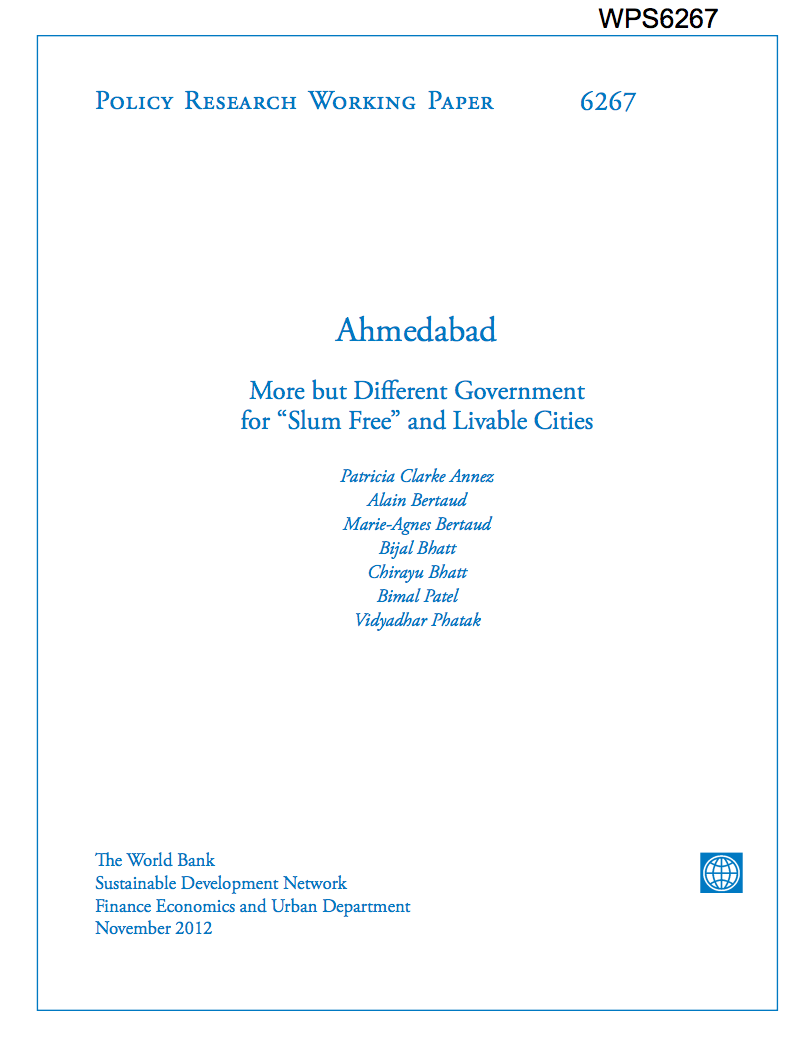Resource information
This paper analyzes real estate market dynamics over the past decade in the city of Ahmedabad, India, with a view to improving the living conditions of the large population living in slums. The paper combines census data, the National Sample Survey, and slum household surveys to review the demand side of the market. Satellite photography was used to estimate the production of both formal and informal housing over the past ten years. Analysis of the execution of the development plan for the Ahmedabad region and town planning schemes shows how the system of housing supply has evolved. These analyses are used to assess the feasibility of various approaches to achieving "slum free" cities, the goal of the Government of India's planned assistance program Rajiv Awas Yojana. The paper concludes that notwithstanding a substantial increase in public housing production in recent years, providing subsidized formal homes from government or through reservations for lower income groups in private developments would take more than a generation just to handle the current slum population -- representing one-third of households. Providing basic environmental infrastructure services in existing underserved neighborhoods -- a proven approach under the Slum Networking Program -- and bolstering infrastructure networks for the city to accommodate increased demand are affordable and feasible. Addressing issues such as rural-urban land conversion and ambiguous land tenure, and allowing flexibility for realistic building standards and increasing maximum floor space standards in certain neighborhoods can help to ensure a growing supply of housing that is affordable for moderate and low-income households.


